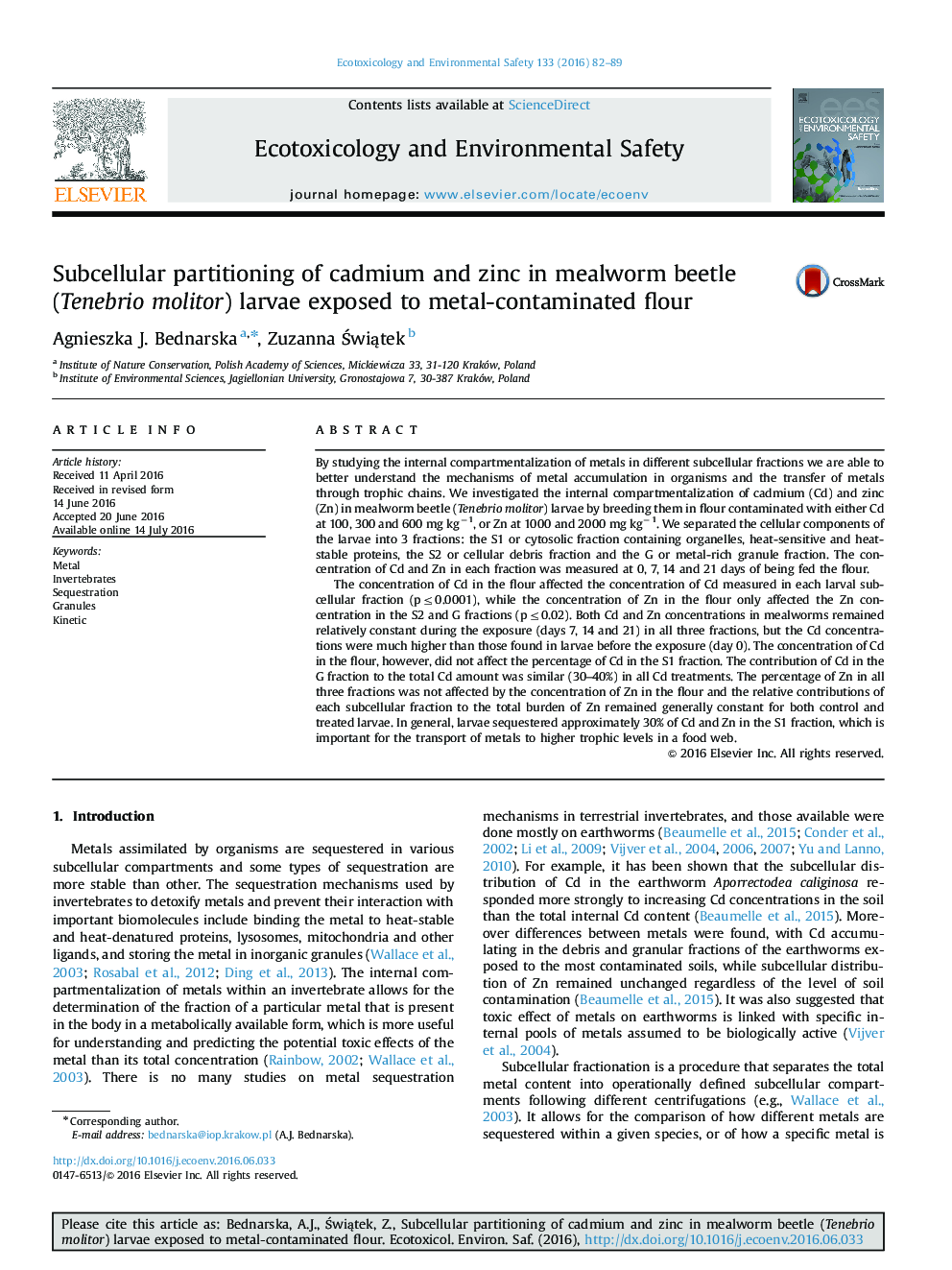| کد مقاله | کد نشریه | سال انتشار | مقاله انگلیسی | نسخه تمام متن |
|---|---|---|---|---|
| 4419048 | 1618930 | 2016 | 8 صفحه PDF | دانلود رایگان |

• Internal compartmentalization of Cd and Zn was studied in mealworms.
• Three subcellular fractions were separated.
• Cd and Zn exposure affected concentration of metals in fractions differently.
• Ca. 30% of Cd and Zn can be bioavailable to higher trophic levels.
By studying the internal compartmentalization of metals in different subcellular fractions we are able to better understand the mechanisms of metal accumulation in organisms and the transfer of metals through trophic chains. We investigated the internal compartmentalization of cadmium (Cd) and zinc (Zn) in mealworm beetle (Tenebrio molitor) larvae by breeding them in flour contaminated with either Cd at 100, 300 and 600 mg kg−1, or Zn at 1000 and 2000 mg kg−1. We separated the cellular components of the larvae into 3 fractions: the S1 or cytosolic fraction containing organelles, heat-sensitive and heat-stable proteins, the S2 or cellular debris fraction and the G or metal-rich granule fraction. The concentration of Cd and Zn in each fraction was measured at 0, 7, 14 and 21 days of being fed the flour.The concentration of Cd in the flour affected the concentration of Cd measured in each larval subcellular fraction (p≤0.0001), while the concentration of Zn in the flour only affected the Zn concentration in the S2 and G fractions (p≤0.02). Both Cd and Zn concentrations in mealworms remained relatively constant during the exposure (days 7, 14 and 21) in all three fractions, but the Cd concentrations were much higher than those found in larvae before the exposure (day 0). The concentration of Cd in the flour, however, did not affect the percentage of Cd in the S1 fraction. The contribution of Cd in the G fraction to the total Cd amount was similar (30–40%) in all Cd treatments. The percentage of Zn in all three fractions was not affected by the concentration of Zn in the flour and the relative contributions of each subcellular fraction to the total burden of Zn remained generally constant for both control and treated larvae. In general, larvae sequestered approximately 30% of Cd and Zn in the S1 fraction, which is important for the transport of metals to higher trophic levels in a food web.
Journal: Ecotoxicology and Environmental Safety - Volume 133, November 2016, Pages 82–89